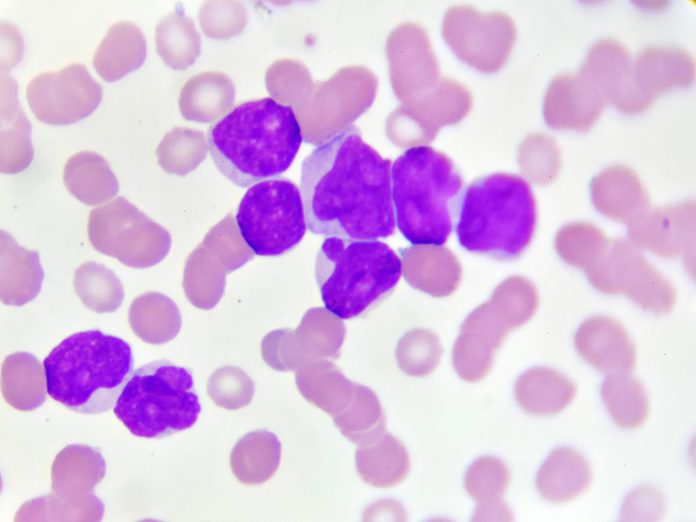
Researchers have been awarded new funding to develop therapies against a form of pediatric leukemia which generally has a poor prognosis. A team led by John H. Bushweller, PhD, of the University of Virginia School of Medicine, is leading the effort to create new therapeutic options for acute myeloid leukemia targeting a fusion protein involving the MLL protein fused with other proteins. Fusion proteins alter the normal activity of the cell, leading to the development of leukemias.
The MLL fusion protein is one of a subset chromosomal translocations that involve the gene MLL. The result is an abnormal protein containing part of the MLL protein attached to other proteins. The most common form seen in infants, MLL fusion proteins have been studied by Bushweller’s lab for several years.
“There is clearly still a need for better treatment options for these leukemia patients,” said Bushweller, who has unraveled how the MLL fusion protein relies on reading DNA methylation patterns on cancer cells to drive leukemia.
Cells use DNA methylation to regulate the expression of a particular gene. Typically, methylation of the DNA is usually associated with turning a gene off, and the non-methylated form is associated with having the gene on.
In 2010, Bushweller discovered the structure of a domain in the MLL fusion protein that binds to cancer cells to keep the MLL gene on. “The domain is essential for these fusions to drive the disease,” he says. “It senses sites on the DNA that are not methylated—the CpGs are not methylated in the DNA, and it will bind to that site to keep it on.”
His team learned that introducing a point mutation in that domain disrupts DNA binding and completely kills the ability of the fusion to drive the disease. That discovery validated the MLL fusion domain as a target. “If we can make a small molecule that binds to that domain it should be efficacious,” he said. That theory is the basis for a new $250,000 grant from the Children’s Cancer Research Fund intended to develop inhibitors. Bushweller and his team found in their lab models that blocking the ability of these abnormal proteins to bind to DNA completely prevented it from causing leukemia. They have already created one set of compounds of moderate potency against the MLL fusion domain on cells, but the next step is to create more potent compounds that are better able to make entry into cancer cells.
“The innovation of this approach comes from the fact that there aren’t any potent small molecules that modulate readers of DNA methylation, that alter the activity of a protein by altering methylation,” Bushweller explained. While there are drugs used in the clinic that get incorporated into the DNA and can inhibit DNA methylation, they are a ‘blunt instrument’ according to Bushweller. “I think this is more precise because we’re targeting one protein that we know is the driver. We aren’t targeting every methylation event in the cell.”
The MLL fusion protein is just one of a family of proteins that have this domain, and it appears to be involved in other cancers as well. Though the team is thinking narrowly now in terms of leukemias going forward there may be multiple applications in cancer.
“DNA methylation has been known to be an important player in cancer, but we don’t yet really have the tools to manipulate that targeting the domains that read that,” added Bushweller. “That’s what we’re excited to try and see where that can go.













